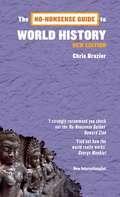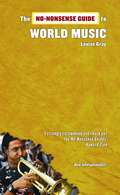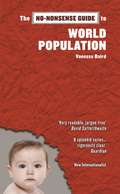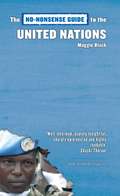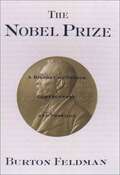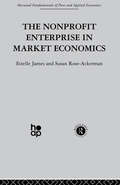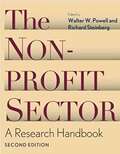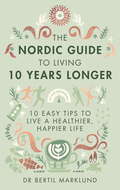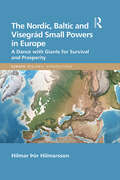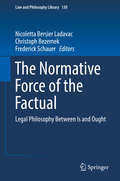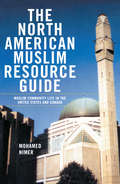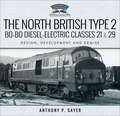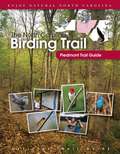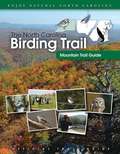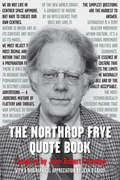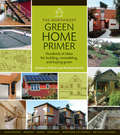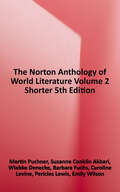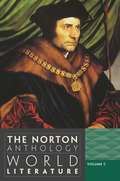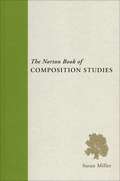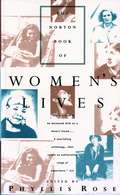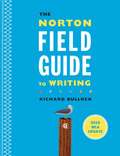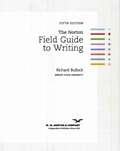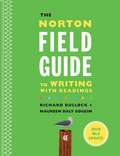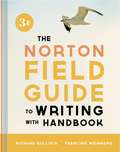- Table View
- List View
The No-Nonsense Guide to World History
by Chris BrazierMost people's knowledge of world history is hazy and incomplete at best. This updated No-Nonsense Guide gives a full picture, revealing the hidden histories and communities left out of conventional history books--from the civilizations of Africa, Asia, and Latin America to the history of women. The new final chapter includes material on the financial crisis and the world response to climate change. Chris Brazier is co-editor at New Internationalist. His previous books include Vietnam: The Price of Peace. He is principal writer for UNICEF's The State of the World's Children report.
The No-Nonsense Guide to World Music
by Louise Gray"World music" is an awkward phrase. Used to describe the hugely multifaceted nature of a range of typically non-English-language popular music from the world over, it's a tag that throws up as many problems as it does solutions.Louise Gray's The No-Nonsense Guide to World Music attempts to go behind the phrase to explore the reasons for the contemporary interest in world music, who listens to it, and why. Through chapters that focus on specific areas of music, such as rembetika, fado, trance music, and new folk, Gray explores the genres that have emerged from marginalized communities, music in conflict zones, and music as escapism.In this unique guide, which combines the seduction of sound with politics and social issues, the author makes the case for music as a powerful tool able to bring individuals together.Louise Gray is a writer and editor whose work on music and performing arts has appeared in the New Internationalist, The Wire, The Independent on Sunday, the Guardian, and Art Review. She co-edited Sound and the City (British Council, 2007), a book exploring the changing soundworld of China.
The No-Nonsense Guide to World Population
by Vanessa BairdNo-Nonsense Guide to World Population (1/2 page) With world population passing seven billion and predicted to hit nine billion by 2050, we are in the grip of a number panic. This book explodes some of the common myths, looks at what the numbers really mean, and addresses nine topics, such as why women in most parts of the world have fewer children, what will happen to our societies as we all live longer, and how having babies relates to climate change. Vanessa Baird is co-editor at New Internationalist magazine. Her previous books include The No-Nonsense Guide to Sexual Diversity and, as compiler and editor, Eye to Eye Women.
The No-Nonsense Guide to the United Nations
by Maggie BlackIn the first book to distill the entire history of the United Nations into one accessible volume, Maggie Black explains how this complex organization works and explores its successes, failings, and current limitations. The book includes the creation of the UN and its early history, how it is structured, and whether it is well constituted in its functions. Black also considers possibilities for reform to make it more democratic, effective, and fit for its purpose.Maggie Black has written books for Oxford University Press, UNICEF, and Oxfam and articles for The Economist and BBC World Service. She has worked as a consultant for UNICEF and Anti-Slavery International.
The Nobel Peace Prize and the Laureates: An Illustrated Biographical History, 1901-1987
by Irwin AbramsHistory of the Nobel Peace Prize itself as well as those who have won it through 1987.
The Nobel Prize: A History Of Genius, Controversy, And Prestige
by Burton FeldmanA lively history of the world's most prestigious award traces the history of the Nobel Prize, explaining how it originated, how it works, and how it is influenced by outside pressures and discussing the six fields in which it is awarded--literature, physics, chemistry, medicine, peace, and economics--and its laureates. R
The Non-profit Enterprise in Market Economics (Fundamentals Of Pure And Applied Economics Ser. #Vol. 9)
by E. James S. Rose-AckermanAnalyses the behaviour of not-for-profit organizations under a variety of conditions and contrasts them with profit maximizing firms, other types of profit-constrained firms and with public bureaucracies.
The Nonprofit Sector
by Rika Lesser Göran Sonnevi Rosanna WarrenThe second edition of The Nonprofit Sector provides a novel, comprehensive, cross-disciplinary perspective on nonprofit organizations and their role and function in society. This new, updated edition keeps pace with industry trends and advances as well as with the changing interests and needs of students, practitioners, and researchers. As before, every chapter has been written to stand on its own, providing sufficient background for the reader to follow the argument without referring to other chapters—allowing readers to selectively choose those chapters that are most relevant to a particular course, interest, or issue. <p><p>The Nonprofit Sector: A Research Handbook includes twenty-seven new or updated chapters. Relevant chapters from the previous edition have been refined, and new chapters have been added to fill in gaps, making this the authoritative reference for all who want an accessible, perceptive, and all-inclusive rendering of the nonprofit sector. The contributors—prominent scholars in their respective fields—carefully reflect upon the variety of changes in the rapidly growing world of nonprofits, examining a wide array of organizations, international issues, social science theories, and philanthropic traditions and covering a broad range of topics including the history and scope of nonprofit activities in the United States and abroad, the relation of nonprofits to the marketplace, government-nonprofit issues, key activities of nonprofits, aspects of giving to and joining nonprofits, and nonprofit mission and governance. <p><p>For anyone who wishes to have a deeper understanding of the nonprofit sector, this remains the essential guide.
The Nordic Guide to Living 10 Years Longer: 10 Easy Tips to Live a Healthier, Happier Life
by Dr. Bertil MarklundThe Danes may have their hygge and the Norwegians their back to the land culture, but the Swedes have 'lagom': an even-keeled approach to a life of balance.Dr Bertil Marklund - a doctor and researcher at the Gothenburg University with over forty years of experience - provides the most cutting-edge research to explain the ten areas we should focus on to better our chances of a long life.This compact guide provides wisdom from the Nordics, a region long known for its healthy and progressive lifestyle. It debunks myths on things we have been told are not good for us but actually can be: did you know drinking coffee will promote your health? Or that more people die of lack of Vitamin D than they do of skin cancer? By providing pragmatic and realistic advice, Dr Marklund gives you the power to make a difference in your own life today and for the future.
The Nordic, Baltic and Visegrád Small Powers in Europe: A Dance with Giants for Survival and Prosperity (Europa Regional Perspectives)
by Hilmar Þór HilmarssonThis volume addresses and seeks to answer a number of questions on the current issues facing small states/powers in Europe. How can small European states survive and prosper within a multipolar world of great powers? What part should small states take in European integration? Are EU fiscal and monetary policies allowing for Keynesian economic stimulus when needed and are euro area convergence criteria viable as the world recovers from the COVID-19 crisis? Are small state alliances within the EU useful to counterbalance the influence of the larger EU member states? How far should EU and NATO expansion go? Should it include countries such as Ukraine? Can the EU rely on US leadership of NATO for its security? How should small states relate to great powers seeking to influence Europe, most notably the US, the People’s Republic of China and the Russian Federation? Do smaller states need to choose a single ally among the major powers? Using an interdisciplinary approach, the author discusses issues of economic policy, international relations and politics, economic and political integration, as well as the effects of global and regional institutions, and priorities in bilateral development cooperation, demonstrating how policies are shaped by the interaction between small states (small powers) and large states (great powers).
The Normative Force of the Factual: Legal Philosophy Between Is and Ought (Law and Philosophy Library #130)
by Frederick Schauer Christoph Bezemek Nicoletta Bersier LadavacThis book explores the interrelation of facts and norms. How does law originate in the first place? What lies at the roots of this phenomenon? How is it preserved? And how does it come to an end? Questions like these led Georg Jellinek to speak of the “normative force of the factual” in the early 20th century, emphasizing the human tendency to infer rules from recurring events, and to perceive a certain practice not only as a fact but as a norm; a norm which not only allows us to distinguish regularity from irregularity, but at the same time, to treat deviances as transgressions. Today, Jellinek’s concept still provides astonishing insights on the dichotomy of “is” and “ought to be”, the emergence of the normative, the efficacy and the defeasibility of (legal) norms, and the distinct character of what legal theorists refer to as “normativity”. It leads us back to early legal history, it connects anthropology and legal theory, and it demonstrates the interdependence of law and the social sciences. In short: it invites us to fundamentally reassess the interrelation of facts and norms from various perspectives. The contributing authors to this volume have accepted that invitation.
The North American Muslim Resource Guide: Muslim Community Life in the United States and Canada
by Mohamed NimerThis useful resource provides basic information about Islamic life in the United States. Coverage includes population statistics and analysis, as well as immigration information that tracks the settlement of Islamic people in the America. The guide contains contact information for mosques, community organizations, schools, women's groups, media, and student groups. Recent Islamic-American events over the past five years are also reviewed.To see the Introduction, the table of contents, a generous selection of sample pages, and more, visit the The North American Muslim Resource Guide website.
The North British Type 2 Bo-Bo Diesel-Electric Classes 21 & 29: Design, Development and Demise (Locomotive Portfolios)
by Anthony P. SayerThis comprehensive history of these unique locomotives covers everything from performance issues to sightings, detail differences and liveries. The Type 2 Bo-Bo Diesel-Electric Classes 21 & 29 locomotives were constructed by the North British Locomotive Company in the early 1960s. Used in the Scottish region of British Railway, they ran into numerous problems and were withdrawn from service within a decade. Due in part to their short careers, these locomotives remain something of a mystery to train enthusiasts. The scant information available on them is very often riddled with misinformation. This authoritative volume corrects the record, presenting the most comprehensive and accurate account of the NBL Classes 21 & 29. Fully illustrated with photographs and detailed line drawings, this volume offers individual locomotive histories, complete technical specifications, accident and fire damage reports, storage histories, and a complete account of their disposal at both private companies and Glasgow Works.
The North Carolina Birding Trail
by North Carolina Birding TrailNorth Carolina harbors an incredible diversity of habitats that provide food and shelter for more than 440 bird species throughout the year, making the state a destination for birders and nature lovers. The North Carolina Birding Trail is a driving trail linking birders and tourists with great birding sites across the state and the local communities in which they are found.The second of three regional guides, the Piedmont Trail Guide presents 103 premier birding destinations in the North Carolina piedmont, most within an easy drive of the state's urban centers, between Charlotte on the west and Interstate 95 on the east. The spiral-bound volume features maps, detailed site descriptions, and color photographs throughout. Each site description includes directions as well as information on access, focal species and habitats, and on-site visitor amenities. Special "while you're in the area" listings accompany each of fourteen site groupings, so visitors can travel to a cluster of birding destinations and enjoy other local highlights and attractions along the way.
The North Carolina Birding Trail
by North Carolina Birding TrailNorth Carolina harbors an incredible diversity of habitats that provide food and shelter for more than 440 bird species throughout the year, making the state a destination for birders and nature lovers. The North Carolina Birding Trail is a driving trail linking birders and tourists with great birding sites across the state and the local communities in which they are found.The first of three regional guides, the Coastal Plain Trail Guide presents 102 birding destinations east of Interstate 95. The spiral-bound volume features maps, detailed site descriptions, and color photographs throughout. Each site description includes directions as well as information on access, focal species and habitats, and on-site visitor amenities. Special "while you're in the area" listings accompany each of sixteen site groupings, so visitors can travel to a cluster of birding destinations and enjoy other local highlights and attractions along the way.
The Northrop Frye Quote Book
by Northrop Frye Jean O'Grady John Robert ColomboA collection of quotations from Canada’s greatest literary theorist. "There is no Canadian writer of whom we can say … that their readers can grow up inside their work without ever being aware of a circumference." Northrop Frye came to that conclusion after a detailed study of the imaginative achievements of Canada’s writers from the earliest period to 1965, when that sentence from his study first appeared in print. Over the decades since then, the statement has come to be regarded as a benchmark of individual and national literary achievement. The Northrop Frye Quote Book is a specialized dictionary of quotations on all subjects that is based on the thoughts and writings of one person. It is the handiwork of a single contributor, albeit the cogitations of a remarkable one. It is also evidence that there is a Canadian writer of whom it may be said that we can grow up inside his work "without ever being aware of a circumference." John Robert Colombo has written, translated, edited, or compiled over two hundred books, including seven dictionaries of quotations. He is a graduate of the University of Toronto and a Fellow of the Frye Centre at Victoria University. Jean O’Grady, a graduate of the University of Toronto, served as the associate editor of The Collected Works of Northrop Frye. She is also the author of the biography of Margaret Addison, the first dean of women at Victoria College.
The Northwest Green Home Primer
by Kathleen O'Brien Kathleen SmithThe essential, real-world, green home manual Everyone can make green home decisions on a budget with this inspiring, informationpacked guide. Whether you are building, remodeling, buying, or just curious, here are real-world strategies for getting the greenest results from your budget, with hundreds of ideas for a home that is built to last, comfortable and healthy, money- and time-saving in the long term, and kind to the planet. From your home's exterior to its operating systems within, from siting to interior design, this is the basic training that has given many the confidence to proceed. Award-winning sustainable design and building consultant and teacher Kathleen O'Brien and architectural designer and sustainability consultant Kathleen Smith offer their "top picks" for each phase. They've also each faced their own green home challenges in a single-family house and a duplex, and other case studies show affordable energy-efficient green homes both old and new. Brimming with ideas, clear and logical, with tips, checklists, and resources for green home planning, construction, remodeling, and maintenance, extensively illustrated with photos and diagrams, this is the essential green home manual for novice and professional alike.
The Norton Anthology of World Literature Shorter Fifth Edition, Volume 2
by Pericles Lewis Suzanne Conklin Akbari Barbara Fuchs Martin Puchner Wiebke Denecke Caroline Levine Emily WilsonHelp all students see the power and relevance of world literature with the most inclusive and effective teaching anthology available. Fresh. Innovative. More global than ever. These are some of the ways instructors describe the Fifth Edition of the most trusted anthology of world literature. New translations, such as Emily Wilson’s Iliad and Kimi Traube’s Don Quixote, an entirely new feature called Translation Lab, and newly refreshed clusters throughout on themes such as storytelling and travel ensure that diverse foundational texts will speak to today’s readers in new ways. What’s more, the complete anthology is now available in ebook format. The Norton Ebook Reader platform―enhanced with powerful annotation tools, video, and audio that create an active reading environment―delivers an engaging suite of resources at an affordable price.
The Norton Anthology of World Literature: Volume C (Third Edition)
by Pericles Lewis Suzanne Conklin Akbari Barbara Fuchs Martin Puchner Wiebke Denecke Vinay Dharwadker Caroline Levine Emily WilsonRead by millions of students since its first publication, The Norton Anthology of World Literature remains the most-trusted anthology of world literature available. Guided by the advice of more than 500 teachers of world literature and a panel of regional specialists, the editors of the Third Edition--a completely new team of scholar-teachers--have made this respected text brand-new in all the best ways. Dozens of new selections and translations, all-new introductions and headnotes, hundreds of new illustrations, redesigned maps and timelines, and a wealth of media resources all add up to the most exciting, accessible, and teachable version of "the Norton" ever published.
The Norton Book of Composition Studies
by Susan MillerThe Norton Book of Composition Studies introduces new students to the historical development and most consequential themes and emphases of the field’s scholarship. It serves both as textbook as well as professional reference.
The Norton Book of Women’s Lives
by Phyllis Rose"This magnificent, handsome, handful of an anthology . . . "* includes sixty-one substantial selections from the twentieth-century literature of women's lives: autobiographies, journals, and memoirs. "As varied in humanity as in geography,"** the women whose life stories are collected here include the famous "Maya Angelou, Maxine Hong Kingston, Anne Frank, Virginia Woolf "and the surprising "Emma Mashinini, a black South African labor organizer; Onnie Lee Logan, an Alabama "granny" midwife; Sara Suleri, an expatriate in America who reflects hilariously on the language of food in her native Pakistan. "Destined to become a classic," this treasury of women's lives, brimming with intelligence, passion, wit, and determination, is a celebration of life itself. *Hungry Mind Review **Washington Post Book World Library Journal
The Norton Field Guide To Writing (Fourth Edition with 2016 MLA Update)
by Richard Bullock Francine Weinberg Maureen Daly GogginThe Norton Field Guide to Writing's flexibility and ease of use have made it the leading rhetoric text on the market--and a perfect choice for committees representing varying teaching styles. With just enough detail -- and color-coded links that send students to more detail if they need it -- this is the rhetoric that tells students what they need to know but resists the temptation to tell them everything there is to know. The Fourth Edition includes new chapters on summarizing and responding, on developing academic habits of mind, and on writing literary analysis. The Norton Field Guide to Writing is also available with a handbook, an anthology, or both. To make the book more helpful for multilingual writers, the versions with the handbook include new chapters on idioms, prepositions, and Englishes; to accommodate instructors and programs teaching literary analysis, the versions with the anthology include two student essays that analyze literature and five short stories and poems for analysis. All versions are available as low-cost ebooks and in mobile-compatible formats for smart phones and tablets.
The Norton Field Guide to Writing
by Richard H. BullockThe best-selling, most flexible rhetoric―now with advice for reading and writing across disciplines. <p><p> The Norton Field Guide lets you teach the way you want to teach. Short chapters with just enough detail can be assigned in any order. Color-coded links send students to more detail if they need it. Menus, directories, and a glossary/index all make the book easy to navigate. This flexibility makes it work for first-year writing, stretch, ALP, co-req, dual-enrollment, and integrated reading-writing courses. <P><p> The Norton Field Guide MLA and APA Update Edition features the latest documentation guidelines from the ninth edition of the MLA Handbook (2021) and the seventh edition of the Publication Manual of the American Psychological Association (2020).
The Norton Field Guide to Writing with Readings (Fourth Edition, 2016 MLA Update)
by Richard Bullock Maureen Daly GogginFlexible, easy to use, just enough detail—and the number-one best selling rhetoric.The Norton Field Guide to Writing’s flexibility and ease of use have made it the leading rhetoric text on the market—and a perfect choice for committees representing varying teaching styles. With just enough detail — and color-coded links that send students to more detail if they need it — this is the rhetoric that tells students what they need to know but resists the temptation to tell them everything there is to know. The Fourth Edition includes new chapters on summarizing and responding, on developing academic habits of mind, and on writing literary analysis.The Norton Field Guide to Writing is also available with a handbook, an anthology, or both. To make the book more helpful for multilingual writers, the versions with the handbook include new chapters on idioms, prepositions, and Englishes; to accommodate instructors and programs teaching literary analysis, the versions with the anthology include two student essays that analyze literature and five short stories and poems for analysis.
The Norton Field Guide to Writing, with Handbook (Third Edition)
by Richard Bullock Francine WeinbergFlexible, easy to use, just enough detail-and now the number-one best seller. With just enough detail - and color-coded links that send students to more detail if they need it - this is the rhetoric that tells students what they need to know and resists the temptation to tell them everything there is to know. Designed for easy reference - with menus, directories, and a combined glossary/index. The Third Edition has new chapters on academic writing, choosing genres, writing online, and choosing media, as well as new attention to multimodal writing. The Norton Field Guide to Writing is available with a handbook, an anthology, or both - and all versions are now available as low-cost ebooks.
